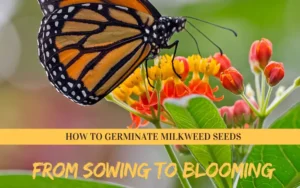🌱 Hydroponic seeds are specifically selected and prepared seeds designed for use in hydroponic growing systems.
Hydroponics is a method of growing plants without soil, using a water-based, nutrient-rich solution instead. This innovative gardening approach offers numerous benefits compared to traditional soil-based cultivation, including faster growth, higher yields, and the ability to grow year-round, regardless of outdoor 🏕️ conditions.
Unlike regular seeds, hydroponic seeds are carefully chosen and often pre-treated to thrive in the unique hydroponic environment. They are typically smaller 🤏 , more compact, and have been bred to perform optimally when their roots are directly exposed to the nutrient-dense water solution, rather than relying on soil for nutrients and moisture.
The use of hydroponic seeds is essential for successful hydroponic gardening, as they are specially adapted to the specific needs and challenges of this soil-less growing method. By selecting the right hydroponic seeds for your system, you can maximize your chances of achieving bountiful harvests of fresh, flavorful produce, herbs, and more, all within the comfort of your own home or controlled growing space.
The use of hydroponic seeds is essential for successful hydroponic gardening, as they are specially adapted to the specific needs and challenges of this soil-less growing method. By selecting the right hydroponic seeds for your system, you can maximize your chances of achieving bountiful harvests of fresh, flavorful produce, herbs, and more, all within the comfort of your own home or controlled growing space.
In the following sections, we will delve deeper into the world of hydroponic seeds, exploring the various types, their unique characteristics, and how to choose the best options for your hydroponic setup to ensure a thriving and productive garden 🏞️ .
What are Hydroponic seeds ❔
While hydroponic seeds may initially appear similar to regular garden seeds, they are actually quite different in their composition and intended use. Conventional seeds are typically bred and selected to perform well in soil-based growing environments, where they can obtain nutrients, moisture, and support from the surrounding earth. On the other hand, hydroponic seeds are specifically designed to thrive in the unique, soil-less conditions of a hydroponic setup, the roots of the plants are directly exposed to a nutrient-rich water solution.
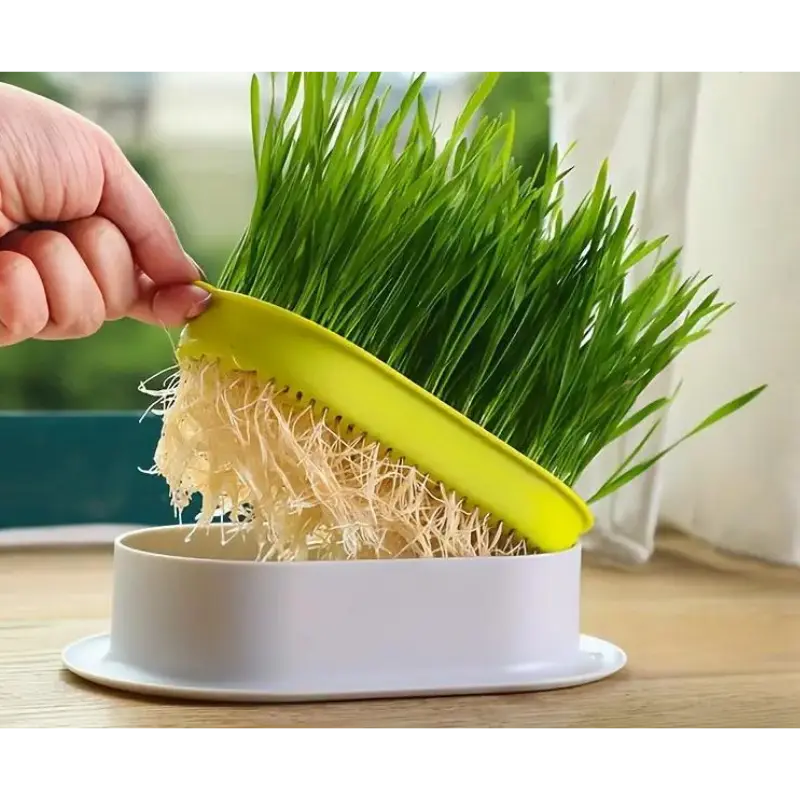
The quality and germination rate of hydroponic seeds are particularly important for success in a hydroponic system. Since the plants rely solely on the provided nutrient solution for their growth and development, it is crucial that the seeds have a high germination rate and are free from any defects or impurities that could hinder their performance. Inferior seed quality can result in inconsistent germination, stunted growth, and ultimately, lower yields.
Choosing the right hydroponic seeds
Factors to consider:
Plant type and growth habit:
The type of plant you choose to grow, as well as its growth habits, will play a crucial role in determining the best hydroponic seeds for your system.
Fast-growing, shallow-rooted plants like lettuce, basil, and strawberries tend to thrive in hydroponic systems because their root systems can easily access the nutrient-rich water solution.
On the other hand, plants with deeper, more extensive root systems or those that require specific soil conditions, such as carrots or potatoes, may not perform as well in a hydroponic setup.
In addition to the plant type, the growth habit is another important factor to consider when selecting hydroponic seeds. Vining plants, such as tomatoes or cucumbers, will require a trellis or other support structure to guide their vertical growth, while bushy, compact varieties may be better suited for smaller hydroponic systems with limited space.
Climate and environmental conditions:
The success and performance of your chosen seeds in your hydroponic system can be significantly impacted by specific environmental conditions, including temperature, humidity, and light levels.
Temperature is crucial because different plant species thrive in different temperature ranges. For example, hydroponic seeds for leafy greens and herbs tend to do well in cooler conditions, while tomatoes or peppers require warmer temperatures to flourish. Selecting hydroponic seeds that are suitable for the temperature range of your growing space will promote optimal growth and yields.
Humidity levels in your hydroponic system also play a role in seed selection. Plants originating from tropical or subtropical regions, like certain herbs and flowering species, prefer higher humidity levels. On the other hand, succulents thrive in drier environments. Matching your hydroponic seed choices to the humidity conditions in your growing area can help prevent issues such as mold, mildew, or stunted growth.
When choosing hydroponic seeds, it is important to consider the amount and quality of light available in your hydroponic setup. Some plants, like leafy greens and herbs, can thrive with relatively low light levels, while fruiting vegetables and flowering species typically require more intense, direct sunlight.
Popular hydroponic seed options
For beginner hydroponic growers, some popular and easy-to-grow hydroponic seed options include:
- 1. Lettuce: It is fast-growing, has shallow roots, and thrives in the nutrient-rich hydroponic environment.
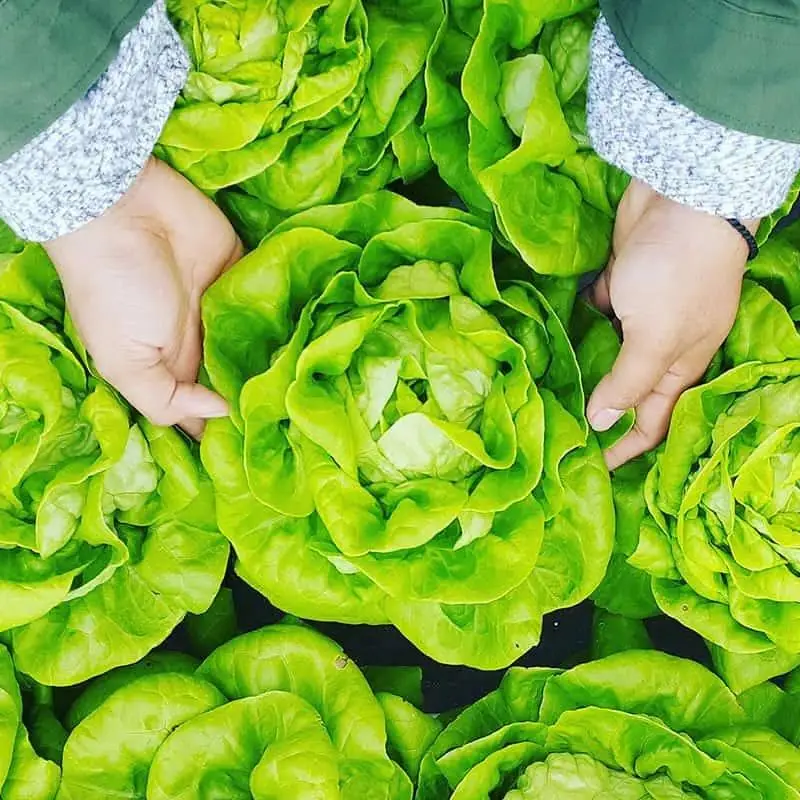
- 2. Herbs: Plants like basil, mint, and cilantro are well-suited for hydroponic systems. They are easy to cultivate and offer abundant harvests.
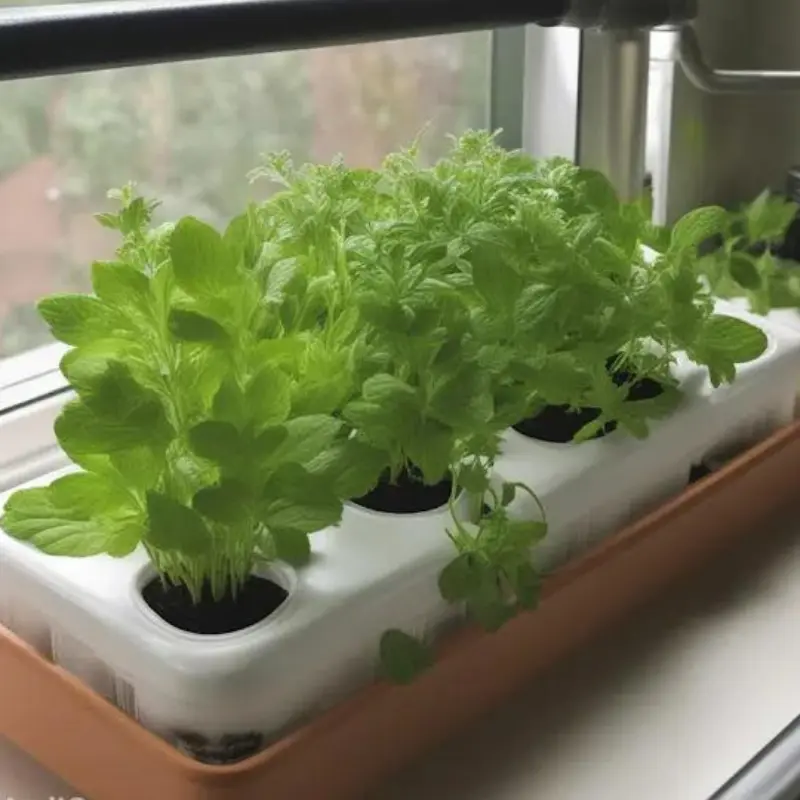
- 3. Strawberries: These compact, ever-bearing plants adapt well to hydroponic growing. They produce delicious fruit with minimal effort.
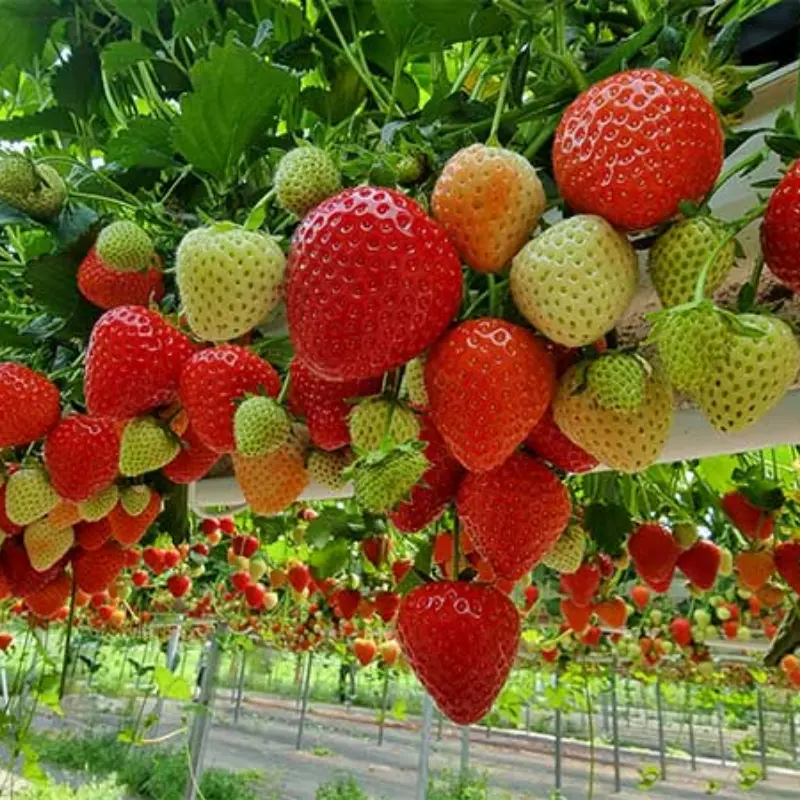
- 4. Tomatoes: Tomato hydroponic seeds are a classic choice. They yield bountiful crops of juicy, flavorful fruit.
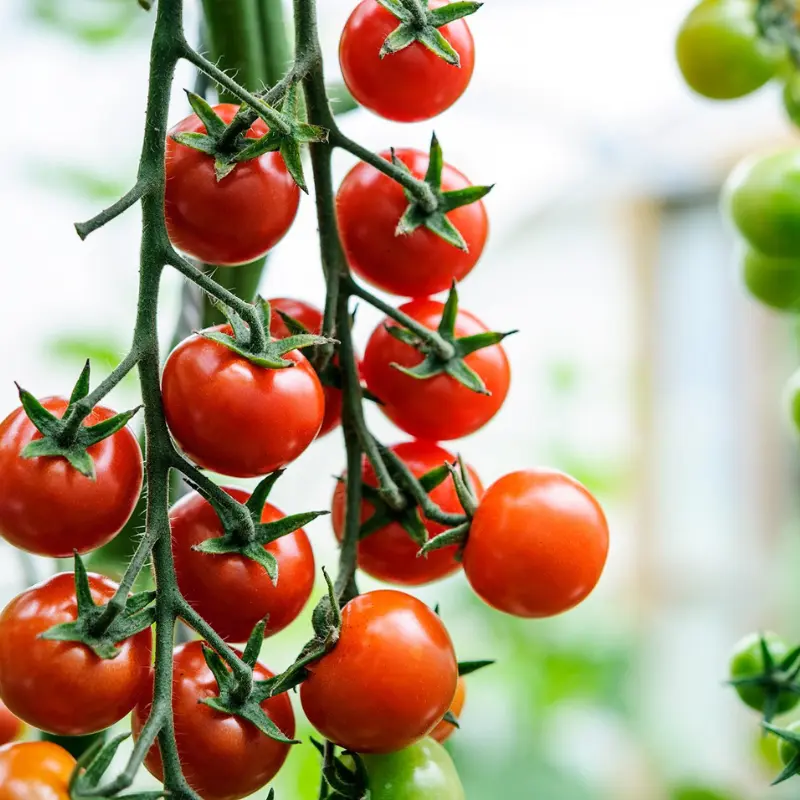
These beginner-friendly hydroponic seed varieties are an excellent starting point. They require relatively simple care and can thrive in a wide range of hydroponic system types and environmental conditions.
For experienced growers who want to expand their hydroponic repertoire, there are some slightly more challenging yet rewarding hydroponic seed options available:
- 5. Peppers: Whether you prefer sweet bell peppers or spicy chili varieties, these plants can be successfully grown in hydroponic systems. However, it is important to note that they may require more precise temperature and light control.
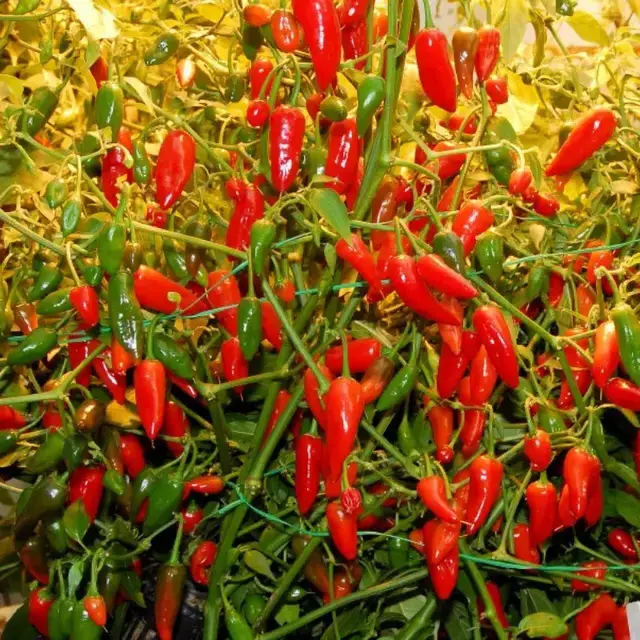
- 6. Cucumbers: Hydroponic cucumbers are renowned for their abundant yields. However, due to their vining growth habit, it is essential to provide them with adequate vertical support.
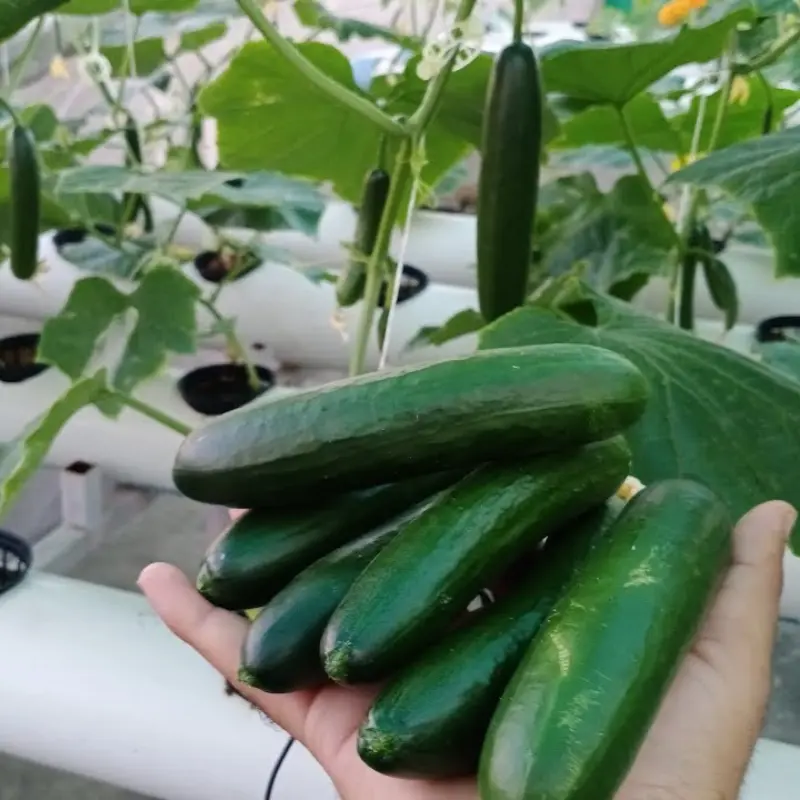
- 7. Melons: They are not the easiest hydroponic crops to grow. However, specialty melon varieties such as cantaloupes and honeydews can be successfully cultivated with the right hydroponic seeds and careful cultivation.
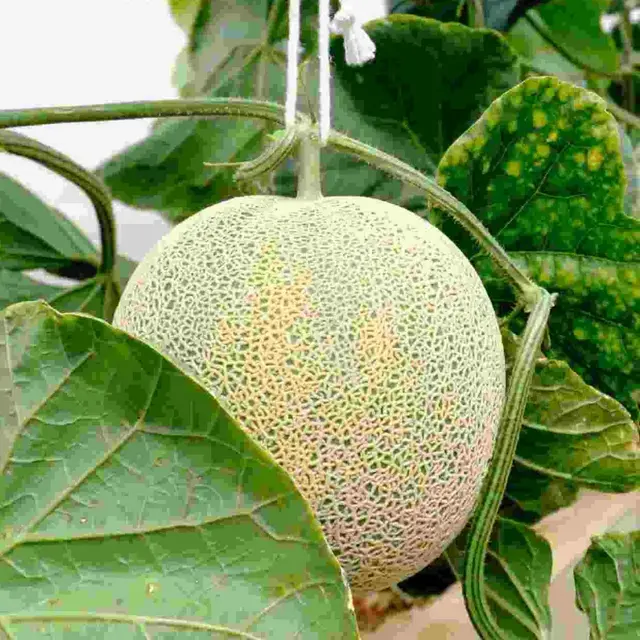
Sourcing hydroponic seeds
Where to buy hydroponic seeds ❔
When it comes to establishing a successful hydroponic garden, the key is to obtain high-quality hydroponic seeds. It is essential to rely on reputable seed suppliers that specialize in hydroponic seeds. These suppliers offer seeds that are vigorous, disease-resistant, and optimized for soilless growing environments.
Online seed retailers such as HTG Supply, Growers House, and Seeds Here Now provide an extensive range of hydroponic seeds that are supported by customer reviews. Additionally, many hydroponic stores offer a variety of seeds suitable for hydroponic systems. Local gardening centers and nurseries may have more limited options, but they can provide expert advice.
By purchasing seeds from vendors who specialize in hydroponic seeds, you can ensure that you receive seeds that are specifically bred for hydroponic conditions. These seeds generally have superior germination rates, faster maturation, and higher yields compared to standard seeds. Reputable sellers also carefully source and test their seeds to guarantee quality control.
Although hydroponic seeds may be initially more expensive, their higher germination rates and optimized yields make them a wise investment for serious hydroponic growers. By obtaining high-quality seeds from a trusted source, you will be setting up your hydroponic garden for success.
Seed saving and germination
One way to obtain hydroponic seeds for future gardens is by saving them from your existing plants. Allow some fruits or flowers to fully mature on the plant, then carefully extract the seeds. Thoroughly dry the seeds before storing them in an airtight container in a cool, dark place.
When you are ready to germinate your hydroponic seeds, there are a few key steps to ensure success. Pre-soaking the seeds for 8-12 hours can help soften the seed coat, improving germination. Using seedling trays or plugs specifically designed for hydroponics will provide optimal moisture levels.
Maintain a warm temperature of around 70-85°F and high humidity by covering the trays until sprouting occurs. A heat mat can be used to provide bottom heat and encourage faster germination. Once the seeds have sprouted, remove the cover and expose them to bright light. With the right conditions, your hydroponic seeds should germinate within 3-10 days.
Monitoring moisture levels is crucial – keep the starter plugs or seedling tray consistently moist but not overly saturated. Once the seedlings develop their first set of true leaves, you can transplant them into your hydroponic system.
Tips for growing hydroponic seeds
There are several effective methods for starting hydroponic seeds before transferring them to your main hydroponic system. The choice of growing medium can impact germination rates and early plant development.
Starting seeds:
1
Rockwool Cubes
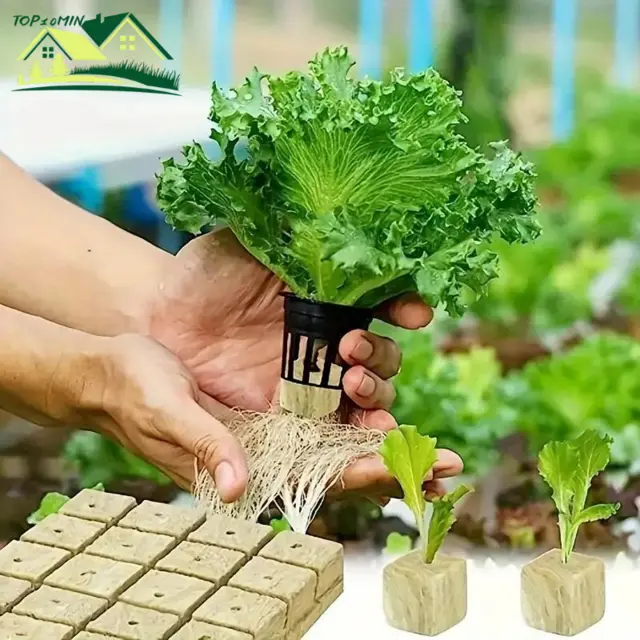
- Begin by soaking the rockwool cubes in water for approximately 5 minutes, then proceed to drain them.
- Next, place the seeds into the holes of the rockwool cubes, usually one or more seeds per cube, depending on the crop.
- In order to promote germination, it is important to keep the rockwool cubes moist and in a dark environment initially.
- Once the seeds have sprouted, expose them to light, preferably with the use of LED grow lights, and maintain a consistent temperature.
- After a couple of weeks, when the seedlings have developed roots, it is time to transfer them to your hydroponic system.
2
Coco Coir
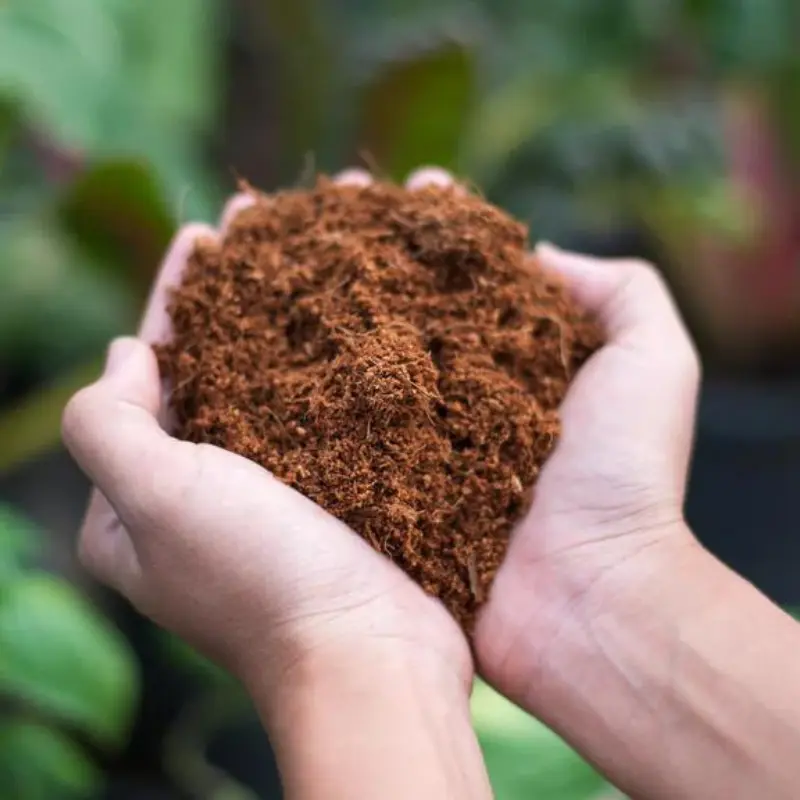
- Start by wetting the coco coir (coconut fiber) with a nutrient solution.
- Plant the seeds directly into the damp coco coir.
- To maintain humidity, cover the seeds with a humidity dome or plastic wrap.
- Ensure adequate light and warmth.
- Once the seedlings have developed a few true leaves, it’s time to transplant them into your hydroponic system.
3
Net Pots
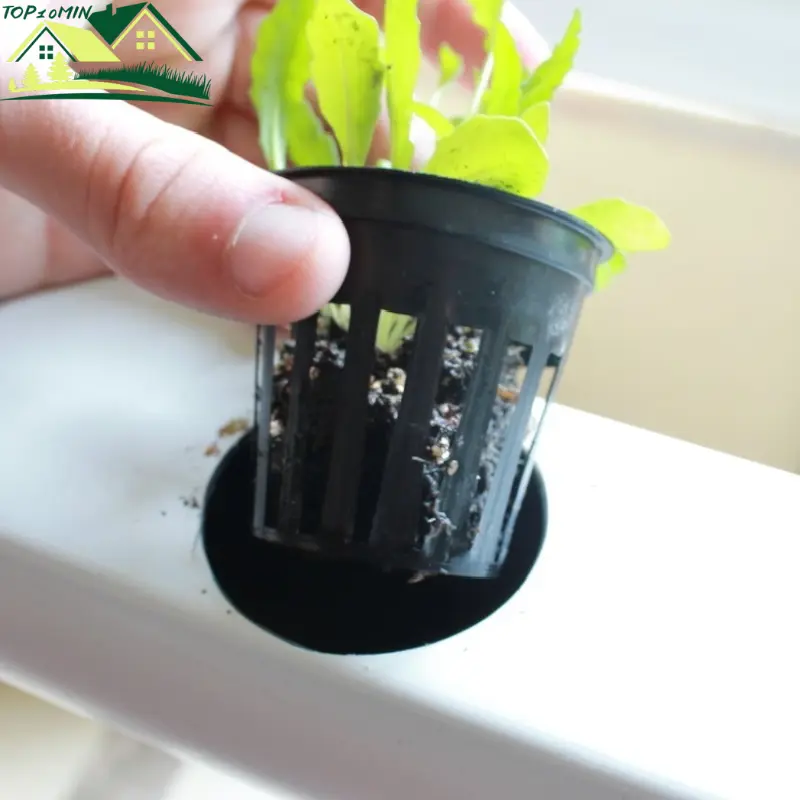
- Fill the net pots with an inert medium such as clay pellets or perlite.
- Place the seeds directly into the net pots filled with the medium.
- Ensure that the medium remains consistently moist.
- Provide sufficient light for 12-16 hours every day and maintain a warm environment.
- As the seedlings grow, transfer them to your hydroponic system.
Seedling care and transplanting:
Once your hydroponic seeds have germinated successfully into seedlings, it is crucial to provide them with proper care to ensure their continued vigor before transplanting.
- Provide seedlings with ample bright light, either through natural sunlight or high-intensity grow lights, for 14 to 16 hours daily (Maintain an appropriate distance between the light source and the seedlings to prevent them from stretching).
- For the nutrient solution, use a diluted hydroponic vegetative formula at approximately 1/4 to 1/2 strength.
- Maintain the ideal temperature (70-75°F), humidity levels, and airflow around the seedlings to ensure their optimum growth.
- Transplant the seedlings when they have reached a height of approximately 3 inches (8 cm) and have developed two or more true leaves, excluding the cotyledons.
Maintaining a healthy hydroponic garden:
Proper care during this crucial phase ensures healthy growth and a successful transition to your main hydroponic system.
- Regularly inspect seedlings for signs of pests, such as aphids or spider mites, or diseases, like damping-off.
- Isolate affected seedlings promptly to prevent spread.
- Gradually increase the nutrient strength as the seedlings mature.
- Monitor the pH levels (usually between 5.5 and 6.5) to ensure optimal nutrient absorption.
- Keep track of nutrient schedules and feeding intervals to ensure consistent growth.
Remember, healthy seedlings lead to robust plants. Ensure that you closely monitor their progress and make any necessary adjustments to the conditions.
What to monitor & Monitoring tools :
You may want to have a few monitoring tools on hand. Most of these devices are reasonably affordable and readily available from hydroponic growing suppliers:
- Thermometer.
- EC (electroconductivity) meter.
- Light meter.
- pH strips or test kit.

Germinating hydroponic seeds using the slant Board Method
When it comes to starting hydroponic seeds, using the right germination method is crucial for successful crop establishment. Traditional substrates like peat moss or vermiculite can damage delicate roots during transplanting. The slant board technique provides an excellent solution for rapidly germinating hydroponic seeds with long, straight roots that can be easily transplanted without any damage.
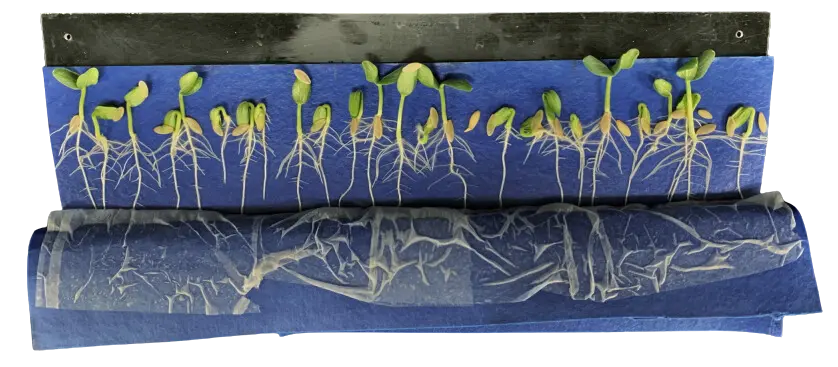
The slant board setup is simple but effective. It consists of angled acrylic or polycarbonate boards with germination paper on top. Seeds are evenly spaced on the paper and covered with a thin absorbent sheet like a Kimwipe. The boards are positioned at a 70-80 degree angle over a water-filled container.
The key advantage of slant boards is the ability to select the most vigorous seedlings with uniform, straight root growth. These can be gently lifted off the germination paper and transplanted into hydroponic systems using neoprene collars without damaging the roots.
Troubleshooting hydroponic seeds : Common issues and solutions
Growing hydroponic seeds can present unique challenges. To assist you, we have compiled a list of frequently asked questions along with troubleshooting tips:
Poor Seed Germination
- Ensure seeds are fresh and intended for hydroponic use.
- Maintain temperatures between 70-85°F.
- Use seedling heat mats to provide bottom warmth.
- Keep the growing medium moist but not soaked.
- Try pre-soaking seeds for 24 hours before sowing.
Nutrient Deficiencies
- Yellowing or distorted leaves can indicate deficiencies (nitrogen, phosphorus, potassium, calcium, magnesium, sulfur).
- Ensure that the pH is within the proper range (5.5-6.5) for nutrient absorption.
- Use a 15-15-15 fertilizer or a complete hydroponic nutrient mix.
- Flush the system periodically to prevent nutrient buildup.
Stunted Seedling Growth
- Provide ample light once sprouted (14-16 hours per day).
- Increase nutrient strength as plants develop.
- Ensure adequate air circulation and oxygen levels.
Pests and Disease
- Ensure proper air circulation and maintain sterile conditions.
- Introduce beneficial insects (such as ladybugs) to control pests.
- Maintain a clean environment.
- Regularly inspect plants and quarantine any infected seeds or seedlings.
With adequate preparation, monitoring, and prompt action, you can prevent or minimize most problems associated with hydroponic seeds. Additionally, do not hesitate to seek assistance from your hydroponic supplier or local experts.
In conclusion, the process of growing hydroponic seeds is about more than just cultivating plants. It involves nurturing a deeper connection with nature and exploring innovative ways to produce our food sustainably.
Traditional soil gardening often involves backbreaking labor, unpredictable weather, and soil-borne pests. But hydroponics? It’s a game-changer! Imagine faster growth rates, higher yields, and water savings—all thanks to those little seeds that thrive in nutrient-rich solutions.
As we have explored, this type of farming offers numerous benefits, including maximizing space and resources while minimizing environmental impact. By harnessing the power of water, nutrients, and light, you can enjoy a year-round harvest.
I encourage you to fully embrace the world of hydroponic seeds and never stop learning and experimenting. With every seed you plant and every harvest you reap, you are not only growing plants, but also nurturing a greener and healthier future for generations to come.
So, grab your seeds, set up your hydroponic system. Happy growing!
FAQ : hydroponic seeds
Can you use any seeds for hydroponics ?
No, while many seed varieties can potentially be grown hydroponically, seeds specifically bred for hydroponic systems tend to perform best. “Hydroponic seeds” are optimized for rapid germination, vigor, and high yields in soilless growing environments.
Do you need special seeds for hydroponics ?
It’s not absolutely required, but using seeds bred specifically as “hydroponic seeds” is highly recommended, especially for beginner growers. These seeds increase your chances of success compared to standard seeds intended for soil gardening.
How many seeds per hydroponic pod ?
The recommended number is 2-3 seeds per net pot, cube, or plug when starting hydroponic seeds. This allows you to cull the weakest seedling and gives you backup in case one doesn’t germinate properly.
What are hydroponic strawberries ?
Hydroponic strawberries refer to strawberry plants grown in a soilless hydroponic system rather than soil. Many commercial hydroponic growers use specialized hydroponic strawberry crowns or seeds to produce fruit year-round using nutrient-rich hydroponic solutions.
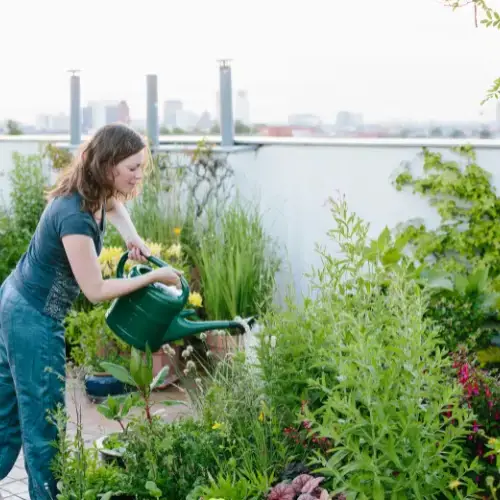
About the Author
As a woman expert in sustainable, environmental, and natural farming methods.
I write about houseplant care sharing tips and tricks i’ve learned over the years to help keep your plants happy and healthy.


